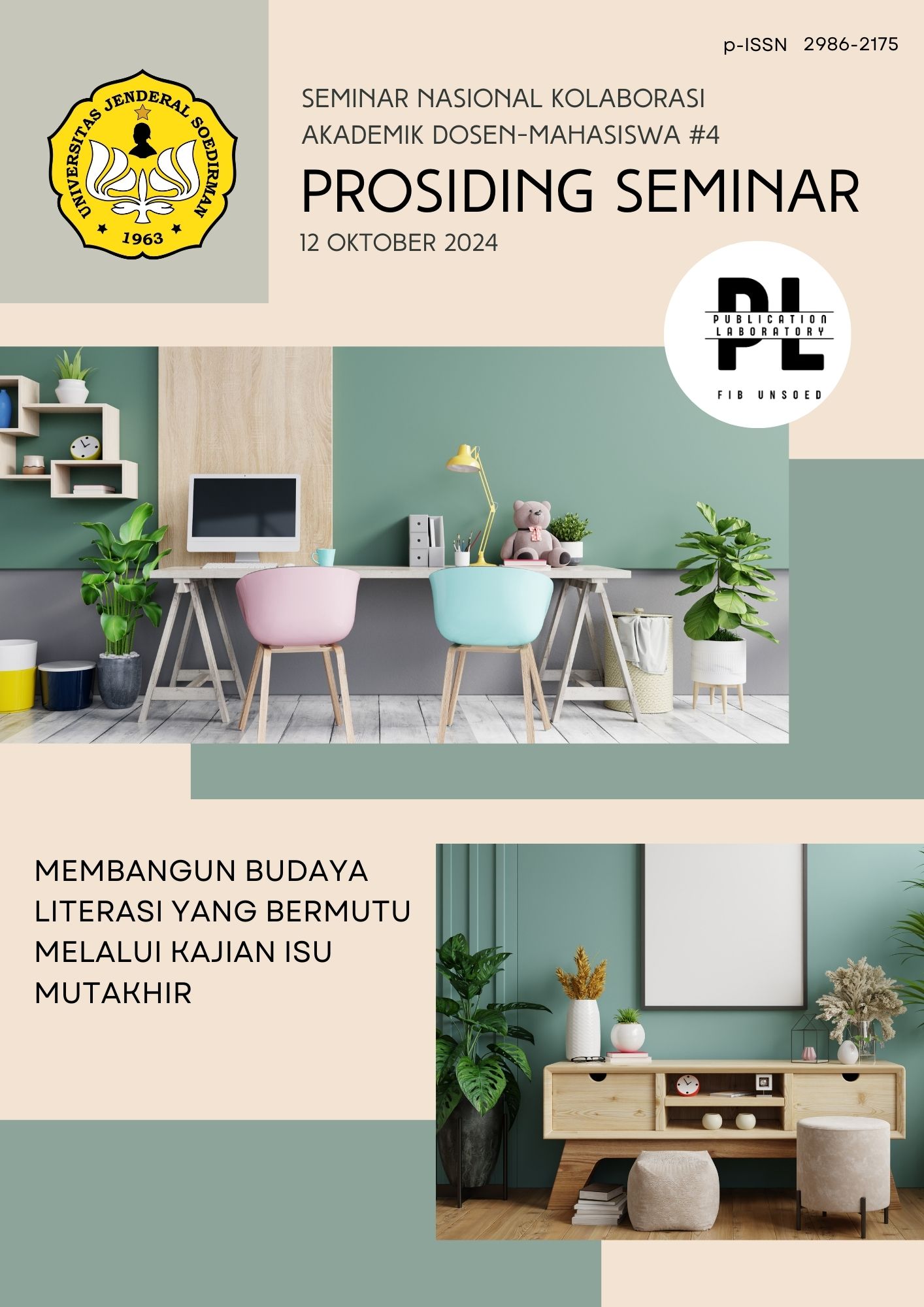The Use of English in Creating Illustrated Storybook entitled The Story of Banyumas Rare Art Festival
Abstract
This study was written in response to the issues regarding rare art tourism in Banyumas Regency, including the diminishing existence of Buncisan, Gondolio, Bongkel, Gumbeng, and Kerinding, limitations of historical sources, and limitations of information media. Based on these problems, this study focuses on creating a bilingual illustrated storybook (Indonesian and English) to promote rare art tourism in Banyumas Regency and analyze the use of English in its development. This study used descriptive qualitative methods, and the data collection methods employed were observation, interviews, documentation, and direct practice. Observation, both direct and indirect, was conducted to identify challenges in managing rare art tourism. Interviews were carried out to explore the potential, current condition, development, and solutions for enhancing rare art tourism. Additionally, documentation utilized resources from the Cultural Division of the Banyumas Regency Tourism, Youth, and Sports Agency. For creating the illustrated storybook, direct practice was carried out through the writing process in five stages: prewriting, drafting, editing, revising, and publishing. Moreover, to analyze the use of English in this book, genre-based writing theory was applied to determine the generic structure of the narrative text, the language used in the story, and the tenses. As an outcome, a bilingual illustrated storybook titled “The Story of Banyumas Rare Art Festival” was created. The book describes five rare art tourism attractions in Banyumas Regency through concise historical narratives presented in both Indonesian and English. Thus, the book serves as a medium to introduce rare art tourism in Banyumas Regency.
Downloads
References
Al Munawaroh, A. I. (2013). Implementasi Pendidikan Karakter melalui Kegiatan Keagamaan di MTs Muhammadiyah Purwokerto. 8–34.
Salmaniah Siregar, N. S. (2002). Metode dan teknik wawancara. Journal of Direktorat Pengembangan Kemahasiswaan, 1–2.
Suin. (2019). Keefektifan Metode Praktik Langsung dan Metode Audiolingual dalam Pembelajaran BIPA Aspek Berbicara Menceritakan Kembali tentang Hari Besar Nasional di Indonesia bagi Pemelajar BIPA 4 UNNES. Rabit : Jurnal Teknologi Dan Sistem Informasi Univrab, 1(1), 2019.
Tiffin University. (2023). The Writing Process. https://library.tiffin.edu/writingprocess/what
![]() Abstract views: 229 times
|
Abstract views: 229 times
|
![]() Downloaded: 27 times
Downloaded: 27 times
Copyright (c) 2025 Prosiding Seminar Nasional Kolaborasi Akademik Dosen-Mahasiswa

This work is licensed under a Creative Commons Attribution-ShareAlike 4.0 International License.






